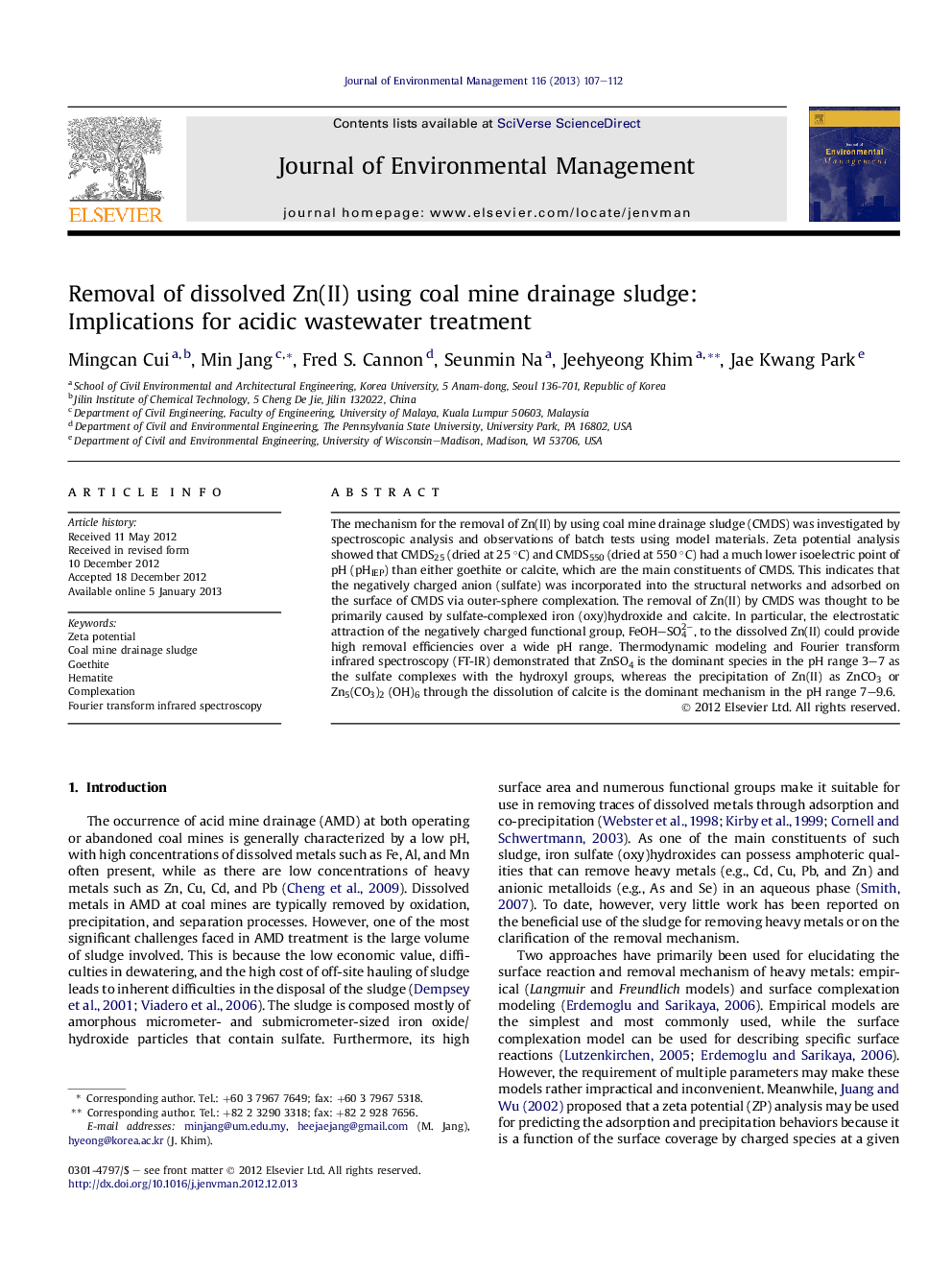| Article ID | Journal | Published Year | Pages | File Type |
|---|---|---|---|---|
| 1056386 | Journal of Environmental Management | 2013 | 6 Pages |
The mechanism for the removal of Zn(II) by using coal mine drainage sludge (CMDS) was investigated by spectroscopic analysis and observations of batch tests using model materials. Zeta potential analysis showed that CMDS25 (dried at 25 °C) and CMDS550 (dried at 550 °C) had a much lower isoelectric point of pH (pHIEP) than either goethite or calcite, which are the main constituents of CMDS. This indicates that the negatively charged anion (sulfate) was incorporated into the structural networks and adsorbed on the surface of CMDS via outer-sphere complexation. The removal of Zn(II) by CMDS was thought to be primarily caused by sulfate-complexed iron (oxy)hydroxide and calcite. In particular, the electrostatic attraction of the negatively charged functional group, FeOH–SO42−, to the dissolved Zn(II) could provide high removal efficiencies over a wide pH range. Thermodynamic modeling and Fourier transform infrared spectroscopy (FT-IR) demonstrated that ZnSO4 is the dominant species in the pH range 3–7 as the sulfate complexes with the hydroxyl groups, whereas the precipitation of Zn(II) as ZnCO3 or Zn5(CO3)2 (OH)6 through the dissolution of calcite is the dominant mechanism in the pH range 7–9.6.
► Coal mine drainage sludge is composed of sulfate complexed goethite and calcite. ► The sludge has a great removal capacity of Zn(II) in a wide pH range. ► Zn(II) can be removed by sludge as forms of ZnSO4, ZnCO3 or Zn5(CO3)2(OH)6. ► The sludge has a great potential to remove heavy metals in acidic water.
